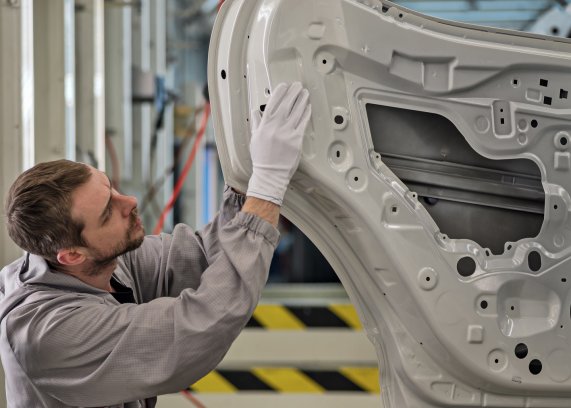
Graphene nanotubes outperform PPE alternatives
Major source of static discharge onto sensitive EV components is from the clothing.

16th December 2021
Innovation in Textiles
|
Adlington, United Kingdom
Electric vehicles (EVs) put new demands on the clothing worn by assembly line personnel and mechanics working on them, says Adlington, UK-headquartered workwear specialist Carringon Textiles.
“Typical workwear for a mechanic in car manufacturing may consist of a polycotton overall or trousers and a polo shirt, which is protective enough for fossil fuelled cars,” says the company’s QA manager Sean Moore. “EVs, however, contain a myriad of sensitive electronic equipment, with the battery pack itself highly prone to static damage during manufacture, assembly and installation into the car, which in extreme cases can lead to an incendiary discharge or a battery fire.
“A major source of static discharge onto sensitive EV components and the battery is from the clothing worn during both manufacture and assembly. To provide full protection against the risk and consequences of a static discharge, antistatic fabric made workwear is considered an essential part of any hazard/risk assessment and cost effectiveness studies in electric vehicle manufacturing.”
To define the antistatic performance of any garment worn in both car and battery manufacture and assembly, the defining performance of the antistatic fabric is to EN 1149-5, he adds.
“This standard has been designed specifically to define the end-use performance in industrial areas such as electric car manufacturing where static can be a hazard to the vehicle components.”
In effect, garments made from fabrics meeting EN 1149-5 cannot cause a static discharge provided they are grounded. For PPE garments worn in areas of potential static risk where CE/CA marking is required, it’s mandatory that the fabric performs to EN1149-5 for protection to the wearer.
“In an industrial environment like car and battery manufacture, it’s not possible to fully ground the person at all times, and this does present some potential risks to static discharge where surface conducting antistatic yarns are used in the fabric,” says Moore “However, the potential risk can be minimised by incorporating specific core conducting yarns that provide optimum protection even in ungrounded situations. Certain parts of battery assembly do present a risk of a life current discharge that can be triggered by a static discharge. In this specific area it is essential that the fabric and the garment also perform to EN 50286.”
Carrington has a wide range of antistatic fabrics for workwear in its portfolio, along with flame retardant or waterproof garments.

Business intelligence for the fibre, textiles and apparel industries: technologies, innovations, markets, investments, trade policy, sourcing, strategy...
Find out more